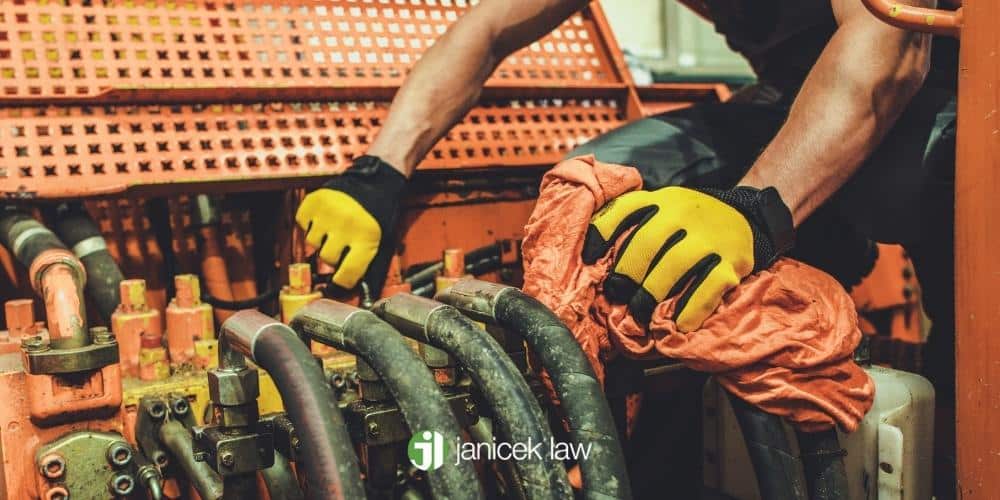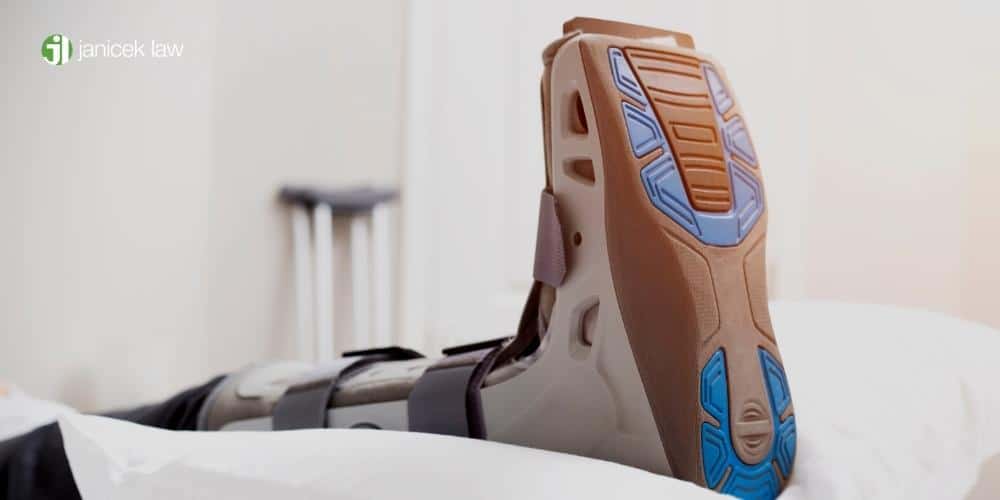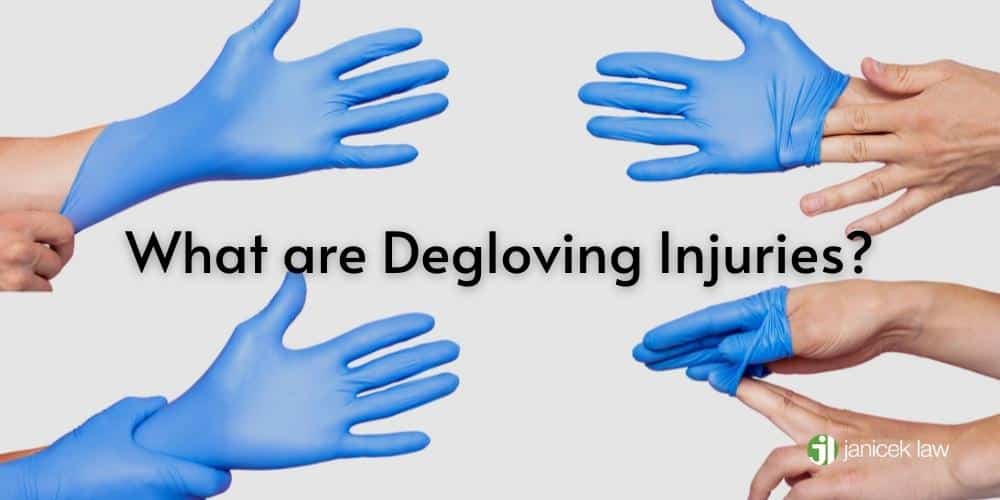Think of a degloving injury like this: ripping off a glove, except that glove is your skin. Degloving injuries involving any body part are incredibly traumatic and often require complex skin repair. Even with the best plastic surgery team, victims of these injuries still have a high risk of infection, tissue death, and blood loss. With severe injuries and complications like this, many victims end up suffering from the debilitating combination of medical bills and lost wages, which can threaten your financial stability for years to come. If your degloving injury was caused by someone else’s negligence, you deserve justice and fair compensation.
The legal team at Janicek Law has decades of combined experience in successfully litigating personal injury claims of all kinds. We have what it takes to ensure that you receive justice for your degloving injury. Call 210-366-4949 to schedule a free consultation.
What are Degloving Injuries?
A degloving injury – also called an avulsion injury – is kind of what it sounds like: your skin gets ripped off like a glove, exposing underlying muscle, connective tissue, bones, etc. Degloving soft tissue injuries are considered catastrophic injuries because they often result in other severe concomitant injuries such as massive blood loss and tissue death.
Most Common Body Parts That Can Suffer Degloving Soft Tissue Injuries
Degloved skin can happen on almost any body part. The most common body parts that suffer degloving injuries include:
- Hands
- Feet
- Fingers
- Toes
- Arms
- Legs
- Face
- Scalp
Types of Degloving Injuries
There are two main types of degloving injuries: open and closed degloving injuries.
Open Degloving Injuries
Open degloving injuries are probably what you were imagining when you first started reading: the subcutaneous tissue gets completely torn off, exposing the muscles and other underlying tissues. In some cases of open degloving injuries, the skin flap is still partially attached to one area of the body while the rest of the body part is exposed.
Closed Degloving Injuries
Closed (internal) degloving injuries – also called Morel-Lavallée lesions – occur when the top layers of skin separate from the underlying fascia due to some kind of extreme force. This violent separation of tissues leaves a large space beneath the skin that may fill with blood, fluid, or fat.
Closed degloving injuries are generally not visible, which often leads to a delayed diagnosis. In fact, up to one-third of trauma patients with closed degloving injuries receive a delayed diagnosis. In most cases of a closed degloving injury, the only visible symptom is a major bruise. Doctors will generally diagnose this injury with magnetic resonance imaging (MRI).
Closed degloving injuries can happen at almost any body part, but a 2017 study claims that these injuries are most common at the hip bone (greater trochanter). In fact, the study claims that approximately 60% of closed degloving cases involve the hip bone. Other common spots for closed degloving injuries include the butt, lower spine, knees, shoulder blades, and torso.

How Do Degloving Injuries Happen?
A degloving injury can happen due to any kind of traumatic accident. Most degloving soft tissue injuries happen due to the following incidents:
- Motor vehicle accidents such as car accidents, truck accidents, motorcycle accidents, bicycle accidents, and pedestrian accidents
- Dog bites or other animal attacks
- Sports injuries
- Industrial or farm equipment accidents
- Construction accidents
- Amusement park accidents
- Slipping and falling from heights
- Forcefully removing small rings from fingers
Can You Die From Degloving Injuries?
Yes, trauma patients can die due to a severe case of avulsed skin, especially if medical malpractice occurs. As previously stated, degloving injuries are generally considered life-threatening injuries because of the massive blood loss and tissue death (necrosis). Severe infection is also incredibly common with these injuries. Patients can die from any of these issues, especially if their doctor does not accurately diagnose the condition and provide quick treatment.
Degloving Injury Treatment Options
There are many diagnostic and therapeutic challenges that come with degloving soft tissue injuries. Treatment options for a degloving injury depend on whether it was an open or closed injury and the overall severity of the injury. In many cases, victims of a severe degloving injury will need multiple surgeries to restore the injured body part back to a somewhat functional state.
Open Degloving Injuries
Early treatment is crucial, especially for open degloving injuries, because the goal is to keep the skin alive with good blood supply. Generally, treatment for soft tissue injuries like this involve complex skin repair with a plastic or reconstructive surgeon. A plastic surgery team will likely pursue the following treatments:
- Reattaching the skin flap to the injured body part.
- Taking a skin graft from another part of the body and attaching it to the injured body part.
- Amputating the body part if there is simply too much blood loss or infection. Additionally, amputation may be an option if the doctor determines that skin grafts just cannot save the injured body part.
Many injured patients also undergo vacuum assisted closure, also known as a wound VAC. This type of therapy helps major soft tissue injuries heal with a medical device that decreases air pressure around the wound bed. This decreased pressure can help the healing process in many ways. It can reduce swelling, pull fluid out of the wound, remove bacteria, and even stimulate new tissue growth.
Closed Degloving Injuries
Meanwhile, closed degloving soft tissue injuries generally don’t require surgery. Minor cases of these injuries are usually repaired with the help of compression bandages, pain medications, rest, and physical therapy.
Severe Morel-Lavallée lesions, on the other hand, may require the following types of treatments:
- Draining excess blood and fluid from the wound.
- Removing dead tissue, if there is any.
- Sclerotherapy, which is when doctors inject blood vessels with medications to improve blood flow in the damaged tissue
If none of these treatments work, the patient may require surgery.
Long-Term Complications of a Degloving Injury
Degloving injuries come with many complications, including:
- Wound infection which can lead to a MRSA infection and/or sepsis if not properly treated
- Tissue death (necrosis)
- Chronic pain
- Nerve damage in the skin flap or skin graft
- Loss of sensation around the degloved skin
- Poor aesthetic appearance of the skin graft
- Major scarring
- Partial or complete amputation of a lower limb or upper extremity
- Death
Can You Sue for a Degloving Injury?
Yes, you can certainly sue for degloving injuries, especially if your injuries were caused by someone else’s negligence. For example, maybe a drunk driver crashed into you and caused your degloving injury. Or maybe you suffered a degloving injury at work that was caused by a machinery malfunction. In cases like this, you could certainly sue the at fault driver, the machine manufacturer, or even your employer.
In order to have the strongest personal injury case possible, you must prove the 4 D’s of negligence:
- Duty of Care: Everyone owes each other a specific duty of care on the roads, at work, etc.
- Duty Dereliction: The at fault party breached this duty of care by acting carelessly or negligently.
- Direct Cause: The at-fault party’s breached duty of care directly caused your degloving injury.
- Damages: You suffered a variety of damages from your degloving injury for which you deserve fair compensation.
Proving these 4 elements of negligence in any personal injury case may sound like an impossible feat, especially without strong legal counsel. San Antonio personal injury lawyers at Janicek Law can help you build a strong case against the at-fault party. We’ll carefully review the facts of your case, determine who is at fault, inform you of your legal rights and options, gather sufficient evidence, and fight for a fair settlement on your behalf.
Damages for Degloving Injuries
A San Antonio personal injury lawyer can help you recover financial compensation for the following types of damages:
- Past and future medical bills
- Past and future physical therapy bills
- Expenses for necessary medical devices such as prosthetic limbs
- Physical pain and suffering
- Emotional distress
- Counseling expenses
- Lost wages
- Loss of earning capacity
- Permanent scarring, disfigurement, or disability
- Funeral and burial expenses if the soft tissue injury resulted in wrongful death

Call San Antonio Personal Injury Lawyers at Janicek Law Today
The legal team at Janicek Law has decades of combined knowledge and experience involving personal injury law. We have what it takes to obtain justice for all sorts of personal injury cases, including ones that involve degloving injuries. If a car accident, work accident, or a product liability accident resulted in life-threatening degloving injuries and other associated injuries, we can help you obtain a fair settlement from the at-fault party. Call a San Antonio personal injury lawyer today at 210-366-4949 to schedule a free consultation.

